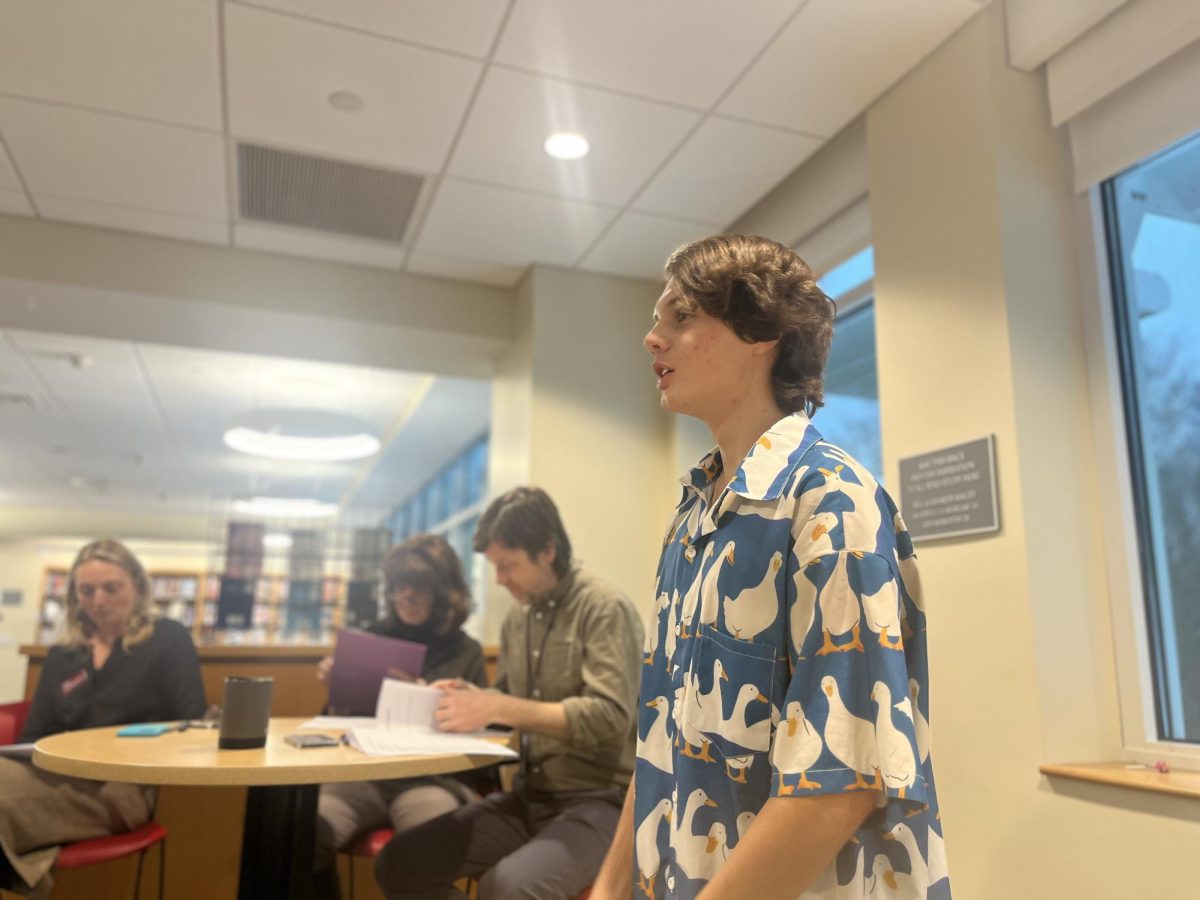When a plane carrying a high school soccer team crashes in the Canadian wilderness, just sixteen passengers make it out alive: twelve players, one coach, and the two teenage sons of the deceased second coach. These lucky few, known as “the Yellowjackets” quickly realize that the sinister forest is not for the weak, particularly those accustomed to suburban life in New Jersey. In the series Yellowjackets, these young survivors must confront a new reality that will force them to make choices no one, let alone children, should ever have to do.
The show, developed by screenwriters Ashley Lyle and Bart Nickerson, presents an eerie narrative blending survival drama with psychological thriller. Not only do the Yellowjackets physically struggle to survive, but they also have to confront the emotional and moral toll that comes with desperation and fear. As the series begins, the Yellowjackets remain somewhat united as one, and obedient of their coach, the only surviving adult. However, as fall turns into winter and the team gets hungry and discouraged, their relationships begin to unravel, especially as they run out of things to eat.
Yellowjackets draws much of its inspiration from the real tragedy of Uruguayan Flight 571, which occurred on October 13, 1972. The flight, carrying a rugby team, crashed in the Andes mountains on its way from Montevideo, Uruguay, to Santiago, Chile. While 32 of the 45 passengers survived the crash, only 16 were recovered after 72 days of unbearably harsh conditions. These survivors had to commit unspeakable atrocities to stay alive, and the desperate actions they resorted to are incorporated throughout Yellowjackets. While the Yellowjackets face similarly extreme conditions, they are teenagers rather than seasoned adult rugby players and are stranded for a year and a half rather than 72 days. This important contrast adds valuable and unique dimension to the show, capitalizing on the complexity of adolescence. Additionally, the series presents a valuable take on how trauma during formative years while identity is still being shaped can test friendships and impact morality. It’s here that Yellowjackets takes a page from William Golding’s Lord of the Flies, the iconic novel in which a group of boys stranded on a deserted island descend into chaos, revealing the dark side of human nature. Lyle and Nickerson have infused Yellowjackets with similar themes, specifically survival, power dynamics, and the breakdown of societal norms, however they hone in on the psychological toll of being stranded for years as teenagers. The wilderness forces the survivors to confront not only the elements but also their own inner darkness. These two preexisting connections add value and depth to the Yellowjackets series.
Yellowjackets also does a fantastic job of reflecting the primal instincts that lie within us all, ready to emerge when faced with extreme circumstances. As the characters are pushed to their limits, the line between civilization and savagery begins to blur. What happens when those who are usually defined by their kindness and empathy must choose between preserving their humanity and doing whatever it takes to stay alive? The show digs deep into this question, illustrating how the struggle for survival can cause people to do things they never thought they were capable of.
While Yellowjackets excels in exploring dark psychological themes and the complexities of survival, it often falls short when it comes to pacing and character development. The show features dual timelines: one where the Yellowjackets are teenagers fighting for their lives in the wilderness, and another where the Yellowjackets reunite as adults. This narrative choice, while creative and ambitious, often feels disjointed, with the present-day storylines occasionally losing momentum and value. Certain viewers might find the flashbacks to the wilderness years more compelling than the adult survivors’ storylines. The adult characters, while intriguing, sometimes seem overshadowed by their younger counterparts, who are given more time to develop and grow as the series progresses.
Additionally, while the show’s exploration of human depravity and power dynamics is compelling, it can occasionally feel overblown or entirely unrealistic. While the dark side of human nature is arguably the most valuable aspect of the series, certain plot points, specifically those dealing with the darker elements of the group’s survival tactics, can feel forced at times, leaning heavily into shock or scare value rather than organic reaction. The series may benefit from a more toned-down approach to these themes, focusing on how the girls’ actions, however extreme, stem from the emotional and psychological scars they carry from their trauma.
In conclusion, Yellowjackets is a captivating and creative show with an exhilarating premise. While improvements could be made on the quality of character development and accuracy, these flaws are easily overshadowed by the strength of the show’s exploration of trauma, power, and the primal instincts that emerge under terror. The true strength of the series lies in its complex character dynamics and its ability to generate intense feelings of tension and dread. Ultimately, Yellowjackets forces viewers to reconsider what they know about human nature, survival, and the lengths to which people will go to preserve not just their lives, but their humanity.


















![iStock. (n.d.). Anonymous business partners making handshake in shadow [Photograph].](https://digitalsentinel.org/wp-content/uploads/2025/04/Screenshot-2025-04-16-at-3.42.57 PM.png)


